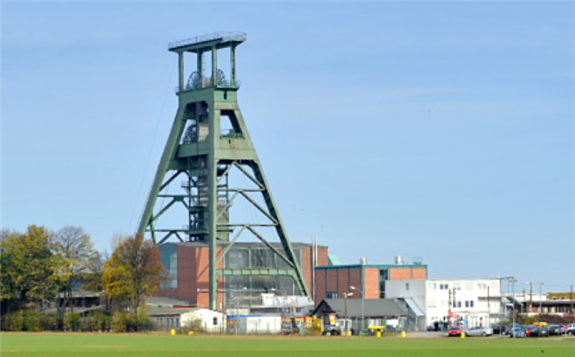Germany is continuing to manage its radioactive waste and used fuel in a safe and responsible manner, an International Atomic Energy Agency (IAEA) mission has concluded. However, it noted areas for potential improvement.
The Konrad minesite - a former iron ore mine - is currently being converted into a repository for low- and intermediate-level waste (Image: BGE)
The Integrated Review Service for Radioactive Waste and Spent Fuel Management, Decommissioning and Remediation (Artemis) team concluded a two-week mission to Germany on 4 October. The team comprised eight experts from Finland, France, Italy, Luxemburg, Sweden, the UK and the USA, plus four IAEA staff members.
Artemis missions provide independent expert opinion and advice, drawn from an international team of specialists convened by the IAEA. Reviews are based on the IAEA safety standards and technical guidance, as well as international good practices.
The mission was requested by the German government. The main German counterpart organisation was the German Environment Ministry (BMU). The team visited and interacted with representatives from a wide range of federal and regional authorities and other organisations.
Germany plans to use the mission to fulfil its obligations under a European Council directive that requires EU member states to invite international peer reviews of their national programmes for the management of radioactive waste and used fuel. A staff member from the European Commission attended the mission as an observer.
The Artemis team said Germany has a mature legal and regulatory framework for the safety of used fuel and radioactive waste management. The team highlighted the professionalism and commitment to safety of all organisations involved in the implementation and oversight of the national programme for radioactive waste and used fuel management (the National Programme).
Artemis team leader Patrick Majerus, head of Luxembourg's Department of Radiation Protection at the Ministry of Health, said: "Germany has an important programme of radioactive waste management and decommissioning. Many lessons have been learnt that will help the international community."
The team identified the involvement of an independent mediating body - Nationales Begleitgremium - in the site selection process for a disposal facility for high-level waste (HLW) as a good practice.
However, the team noted that the planned completion by 2031 of the site selection process for the HLW disposal facility represents a significant challenge. Germany plans to site, license, construct and begin to operate this facility by around 2050.
The retrieval of thousands of barrels of mostly low-level radioactive waste from the Asse II disposal facility is another significant challenge, the team said. The waste is to be removed as the facility, a former salt mine, has proven unstable.
The team provided recommendations and suggestions for further enhancements, including that the government should establish an improved process for monitoring progress in implementing the National Programme. The Federal Company for Radioactive Waste Disposal (BGE), in consultation with the Federal Office for the Safety of Nuclear Waste Management (BfE), should consider making public the approach to applying site selection criteria in the search for a site for a disposal facility that could receive HLW. Also, the BMU should update the cost assessment for the entire National Programme and include the costs for waste retrieval from the Asse II mine.
"Germany has pledged to conduct its work towards radioactive waste disposal in a self-questioning manner and with a mindset of continuous learning," said Philip Borck, head of BGE's project management department. "Therefore, we highly appreciate the input and constructive dialogue during the Artemis mission. Their recommendations and suggestions help us to maintain a high level of safety."
"This peer review was conducted by a team with a wide range of knowledge and expertise," said Wolfgang Cloosters, Director General for Nuclear Safety and Radiological Protection at the BMU. "The outcome of the mission was positive while also providing us with findings that will be a good basis for future improvements."
The final mission report will be provided to the government in about two months.
Under Germany's National Programme, two locations are proposed for the final disposal of radioactive waste: the former iron ore mine Konrad in Salzgitter for low- and intermediate-level waste and another as yet undetermined site for high-level waste. The programme does not seek an extension to the Konrad repository, so the second location will need to accommodate all radioactive waste produced by 2022, when the country's last nuclear power reactor is set to shut under the government's nuclear phase-out policy.
